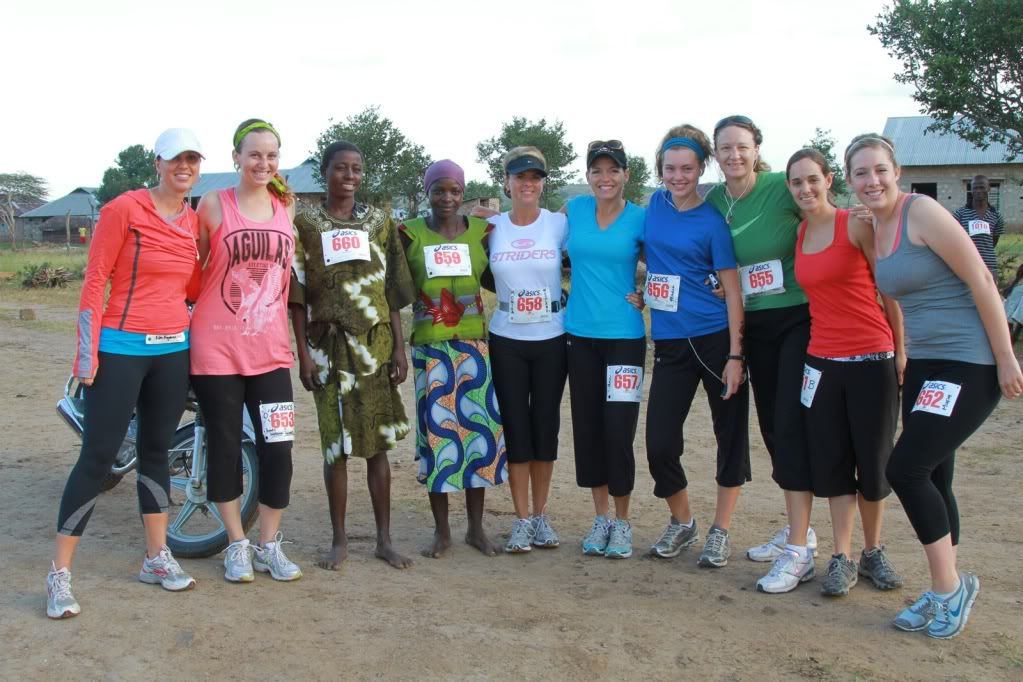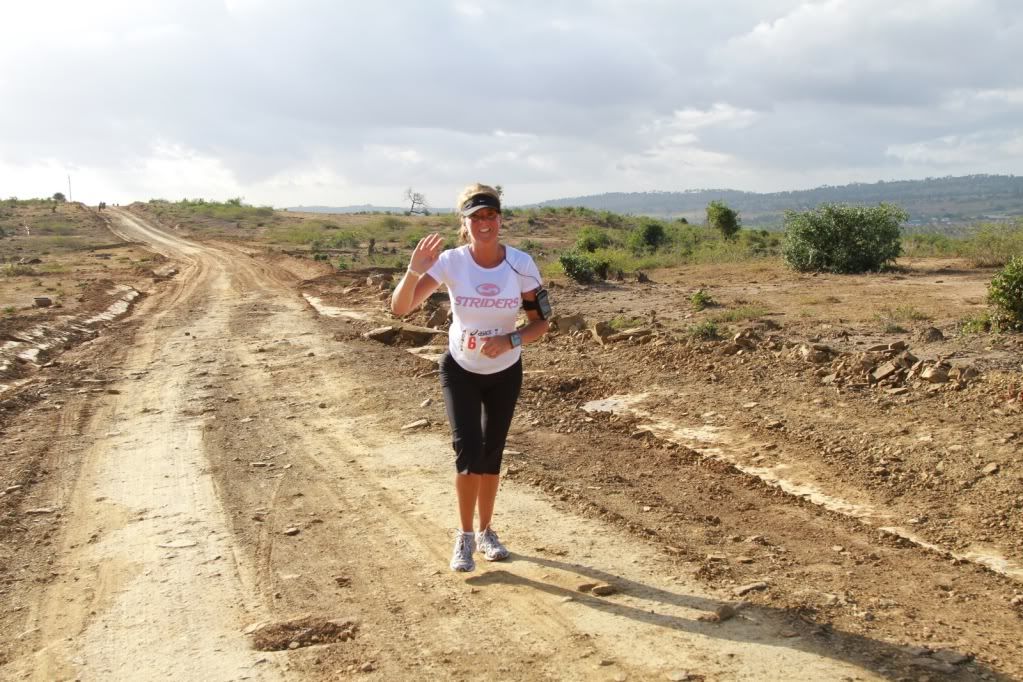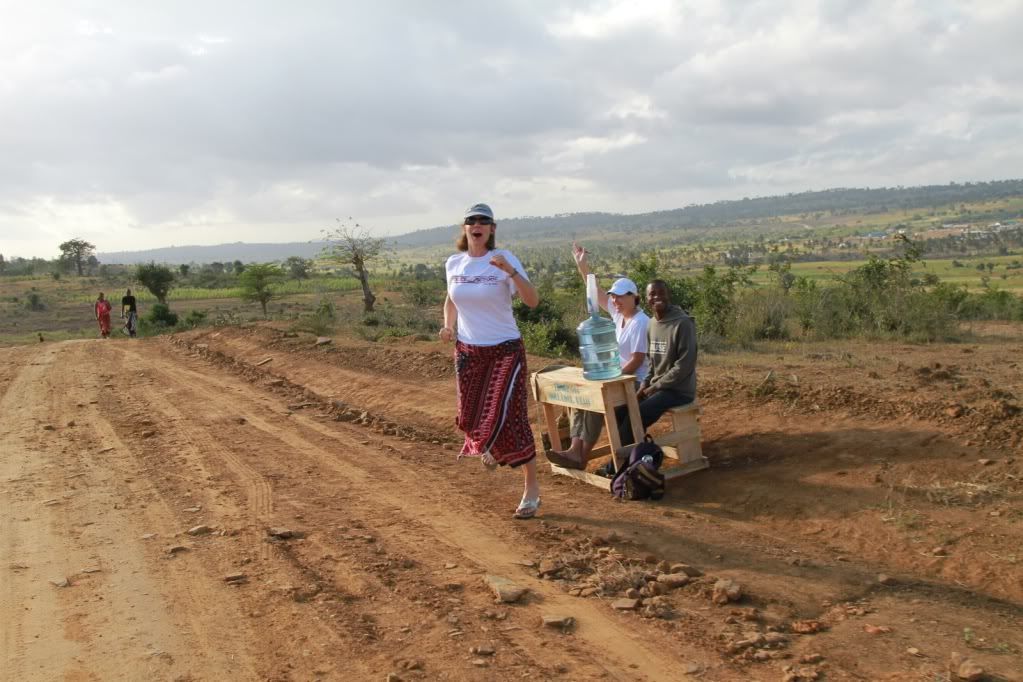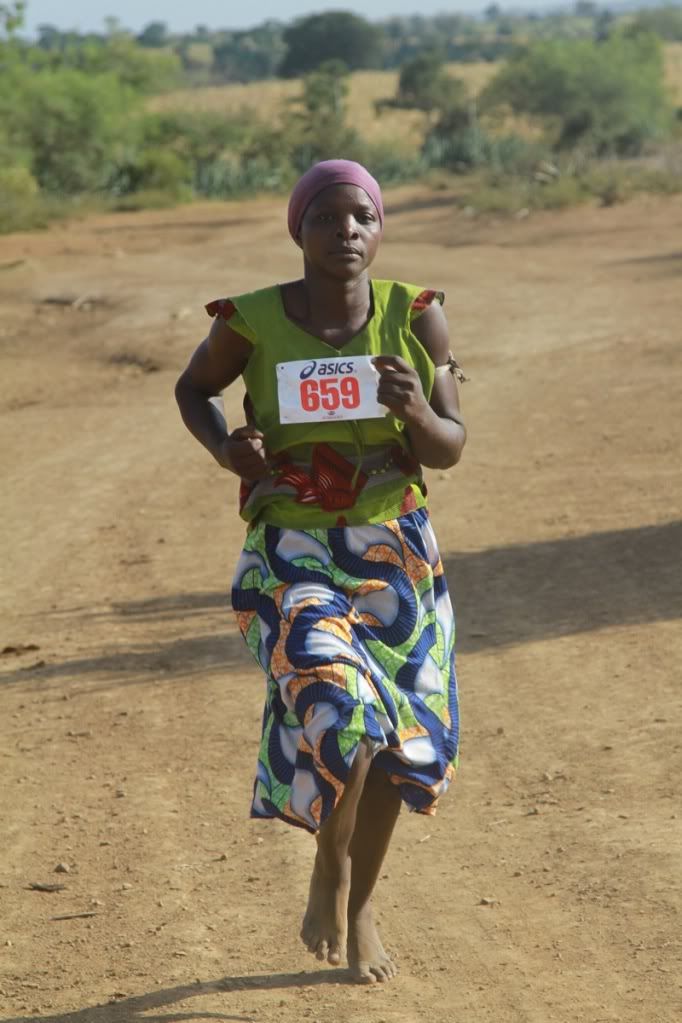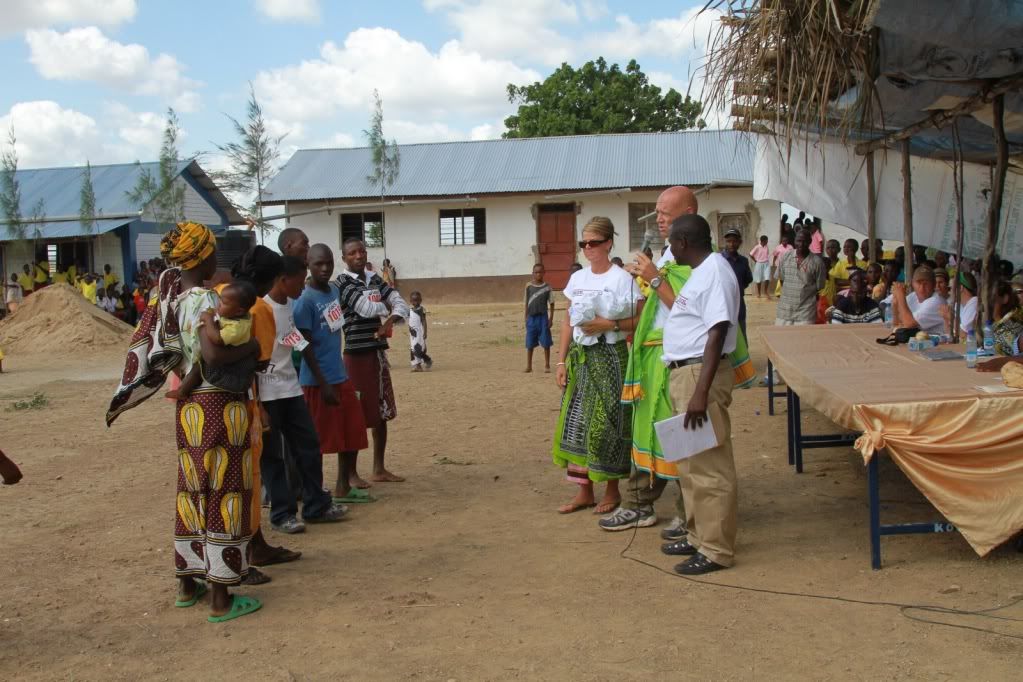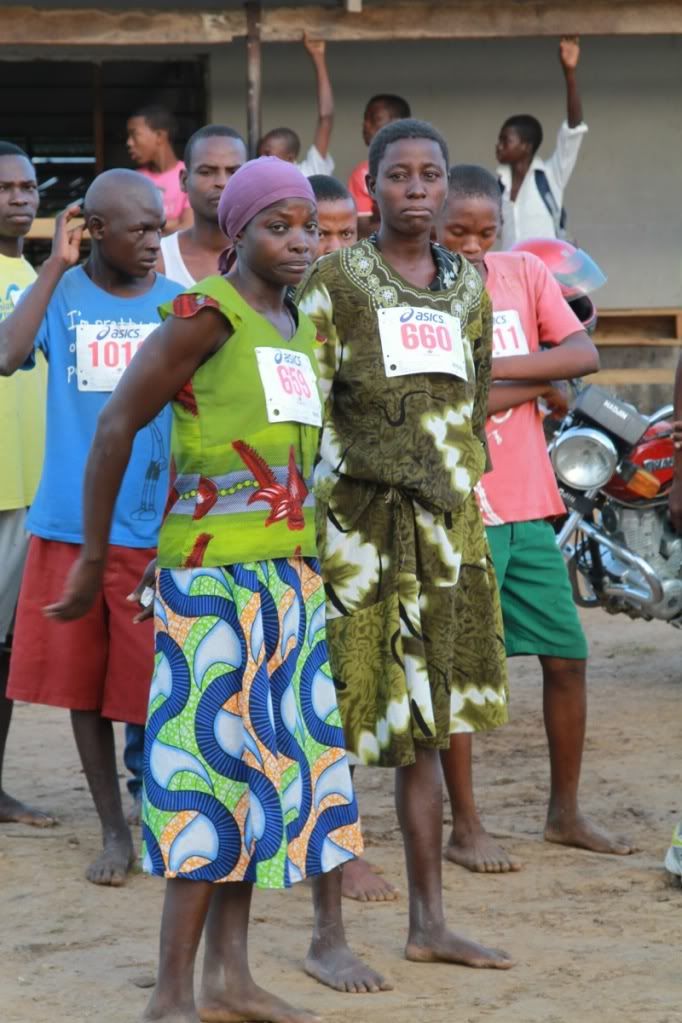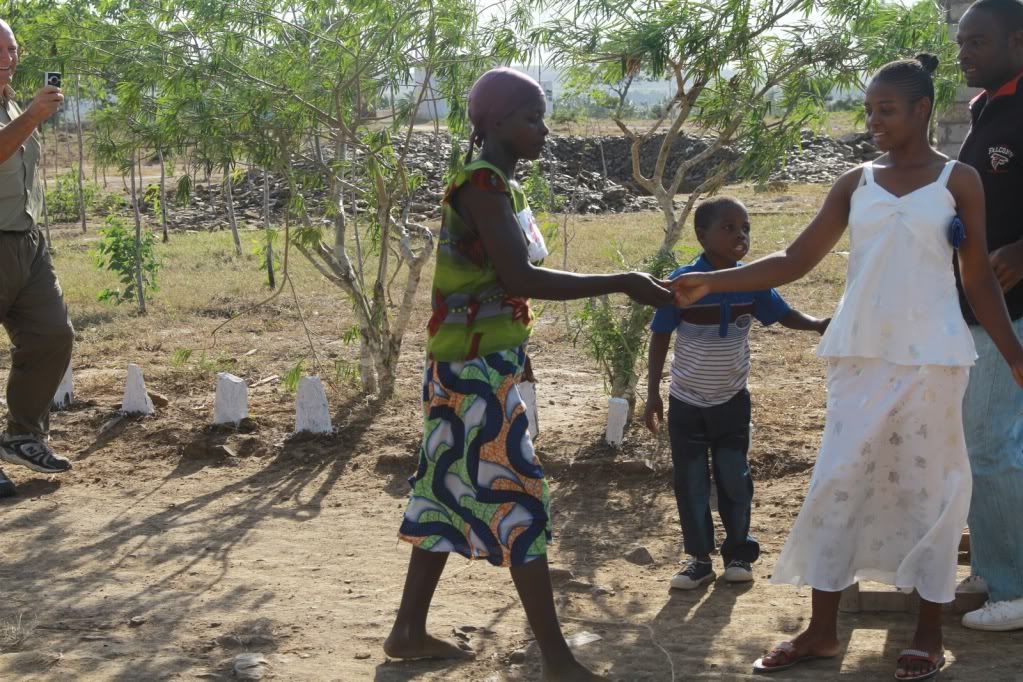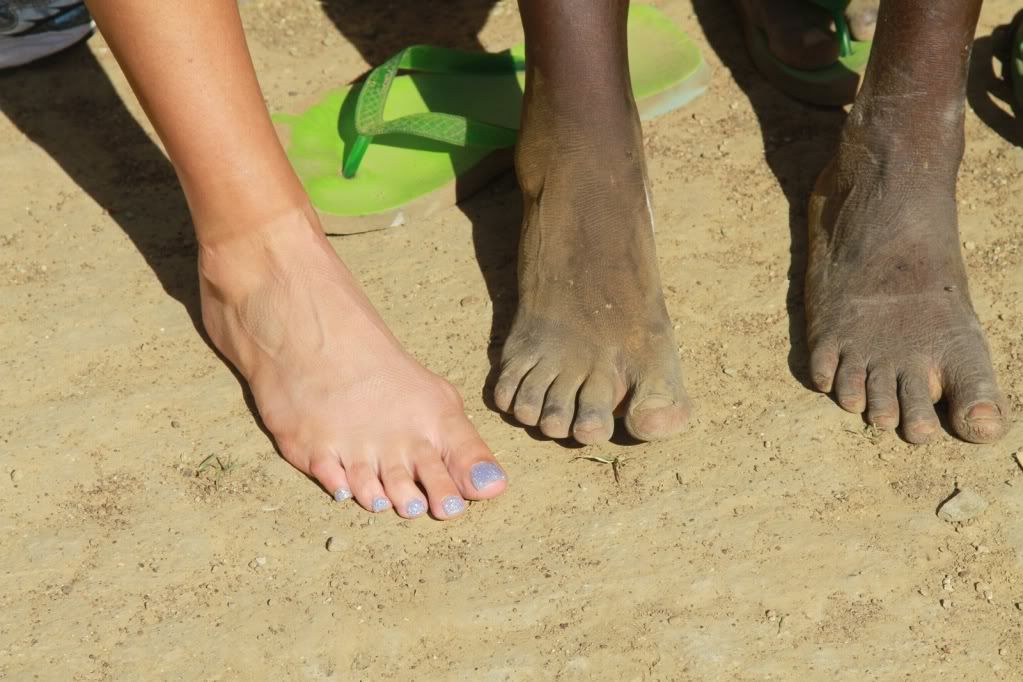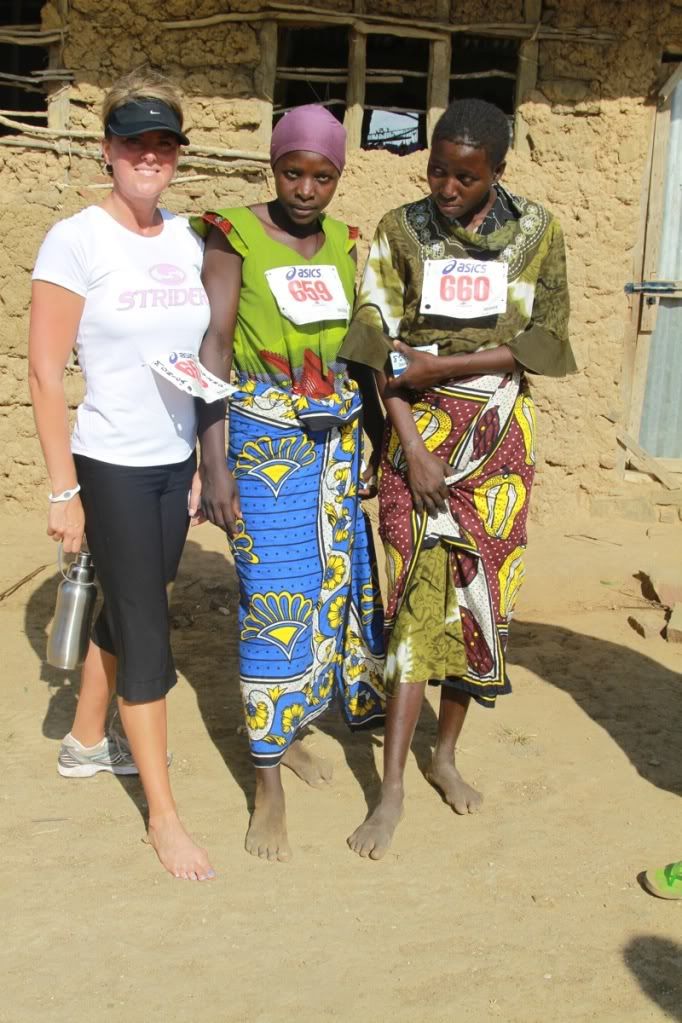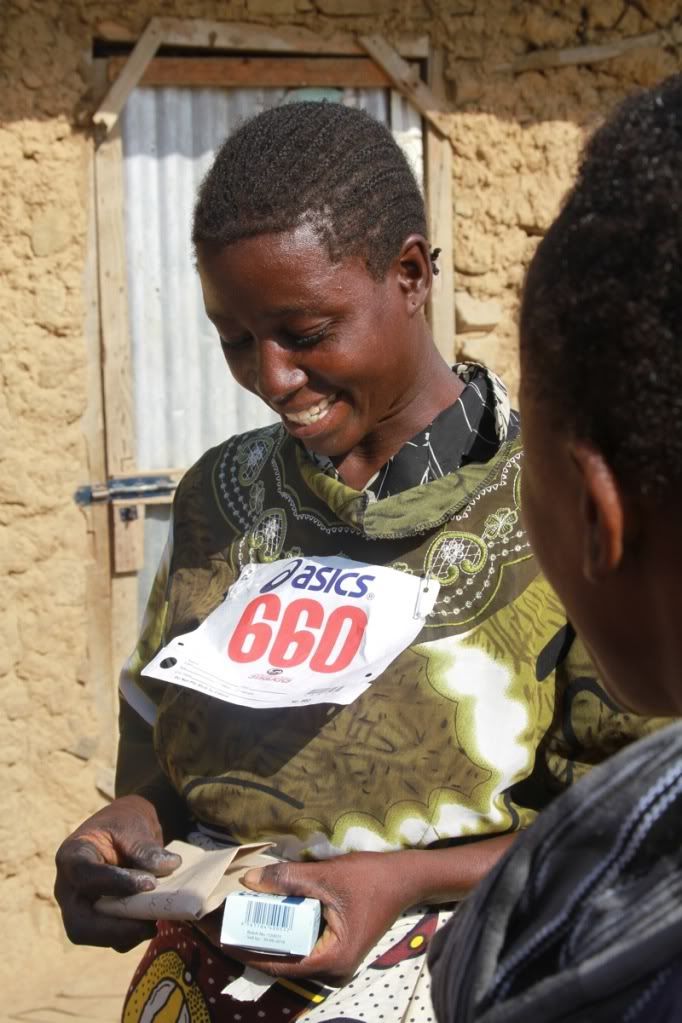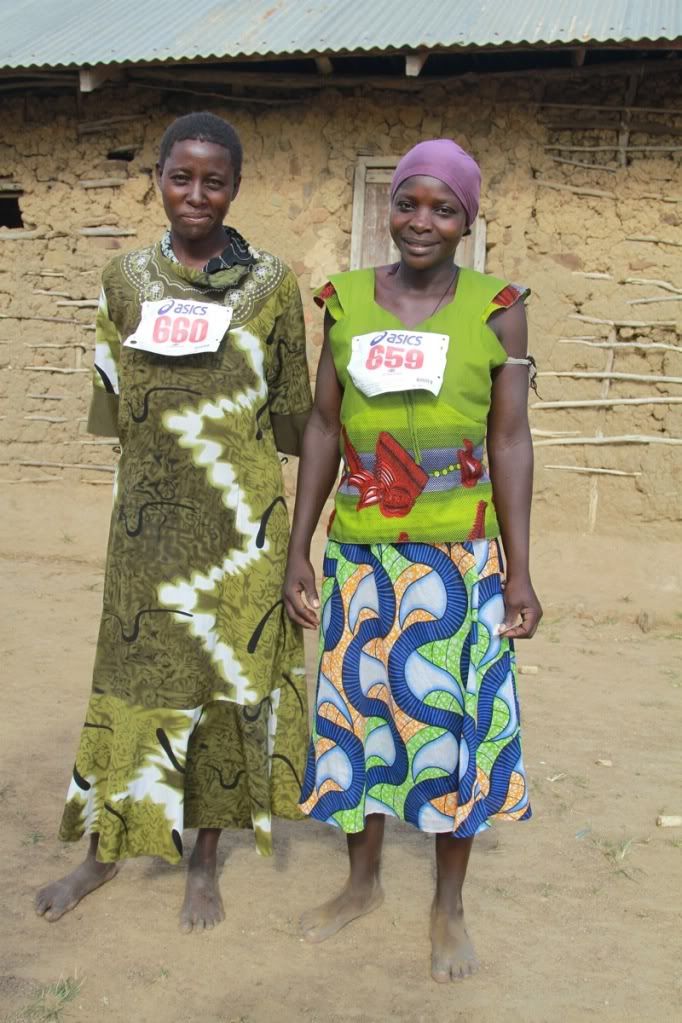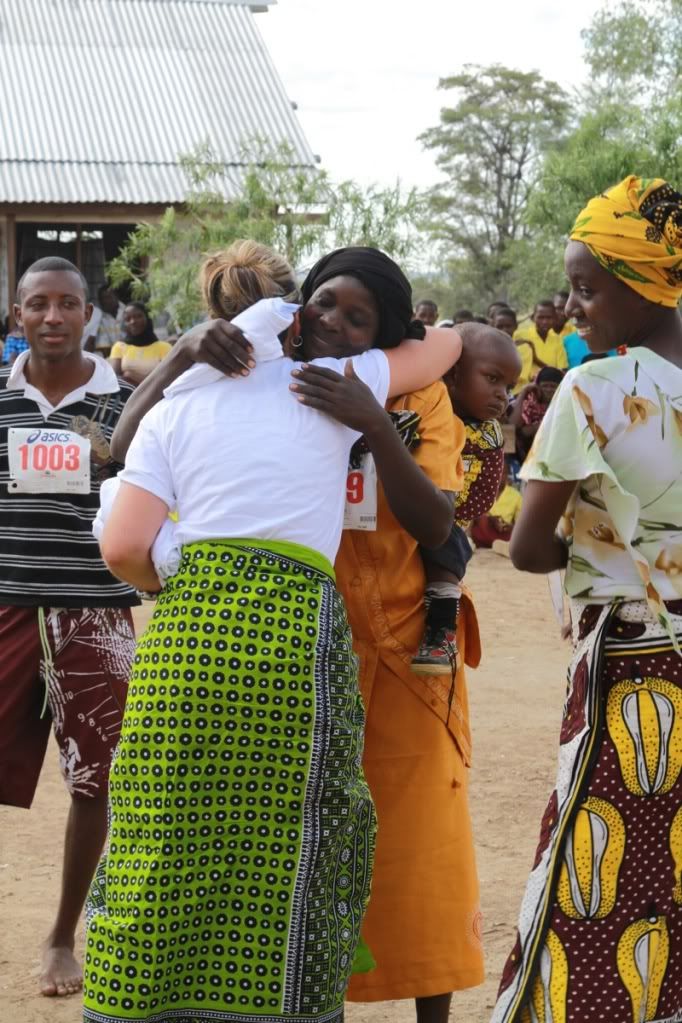This is an update to Bret's Kenyan journal. I have taken this information from a recent email, some of this has been written in complete thoughts, and some are just bullet points of information. There is so much happening, it is hard to keep up! I am glad he is keeping his activities journaled, because trying to recreate all of this after the fact would be very difficult. The following is a week's worth of activity. More photos will follow. Internet connectivity is limited, and sending photos is very time consuming if even possible.
Sunday, October 30, 2011
Yama and Riley went to Mariakani to look at some stoves while the rest of the whites headed towards Mombasa. Dropped us off at Akamba carvers, and Johnson continued to the airport to pick up Kevin, Shad and Grace who had to spend the night in Nairobi due to a delayed connection. We walked the huts at Akamba for 45 minutes, observing the wood carvers in action, and were joined by the three stragglers. We then walked to church along the narrow road from Akamba.
We arrived at church to see a TV up front. Kevin was to play the piano, but the dusty keyboard was broken. We giggled like teenagers at the comedy of errors, sitting at the back of the chapel as we sang hymns in our best mimic of the Kenyan accent. The TV was there to show a recorded session of General Conference. Part of the lesson is to teach the appropriate conducting of meetings.
We then went to the Blue Room so some emails could be sent back home. Several grabbed a bite to eat. We drove to the Tusky's to pick up some needed items, then headed back to the village.
We all went for a walk and came across naked boys in the river, bathing in a pool of water left from recent rains. I offered 20 shillings to the first one to scramble to the top of the riverbed edge, and we observed them in their desperate race to be the first to reach the top of the slippery clay bank. The winner happily collected his prize.
We scouted out possible dam sites with Kevin and Shad. They feel things look very good for what we are trying to accomplish.
Emily is utilizing the new oven well, and prepared pizza for our dinner.
Monday, October 31, 2011
We were all up early, scrambling to our various activities. Kevin and Shad spearheaded the initial work on the dam project. Mark, Lonny and I the took SRA boys to go look at a goat and chicken facility past Mariakani, to give Lonny a good look at our vision. We bought three chickens and a guinea fowl. I wouldn't budge on the rooster. The only reason for the guinea fowl is to eat it and see what he tastes like. If I thought the local rooster was noisy......
 |
| Checking out a local goat and chicken business |
We stopped at a vet store to see what drugs they have available to insure the ongoing health of our stock. Looked promising. Lonny's expertise really comes into play here. We bought some wheelbarrows, shovels, and what everyone wants from this small town - pants.
We picked up a lady in Mazeras who is part of the Ministry of Energy helping us look at clay stove manufacturing where smoke is reduced greatly, and less wood is used to cook. So many village children have respiratory problems because they are currently inhaling the smoke created by cooking over open flames within the huts. If Koins can learn how to manufacture these stoves, then produce and sell them at an affordable price to the villagers, we can help improve the health of families, reduce the need for as much charcoal or wood to burn, and create a more energy efficient way of cooking for the locals. Riley has taken this on as his project.
The dam project is going well. Lots of dirt has been moved, lots to go. Kevin calls us a "Protocol Operation".
There was an instantaneous bug infestation in the girls dorm room. After a battle with DOOM, a pile of dead bugs was swept up by Emily. TIA
We held our first peaches and pits tonight, led by Grace.
Tuesday, November 1, 2011
Everyone is pretty much hitting their groove. They know what they are doing and get right to it, be it in the dispensary, over at Kevin's Creek building a dam, or working with our agricultural guys ramping up for our activities there.
The dam is coming along really well, and villagers are now starting to take notice. We've seen quite a number of people walking from other villages just to see what is going on, so hopefully we'll stay on schedule and give these people a great demonstration in engineering craftsmanship.
Kevin, Mark and I took a trip around the outskirts of our area giving out some baby blankets to some of the newborn babies that weren't able to take a blanket home with them. Kevin's stake, along with some family friends, made dozens of blankets, with some special ones coming from his own daughters and personal friends. He was able to hold several babies, wrapping them in their soft, new, protective blankets before handing them back to their mothers. It was a lot of fun.
Lonny continues to orchestrate the animal activities with the SRA boyz. They are starting the goat pen tomorrow, preparing for the arrival of Tom Rasmussen in a few days. To me, this has the makings of being something great if we get all the details ironed out.
Bloody nose boy, Riley, taking him to Mariakani. Laughing so hard Kevin and I can't breathe.
First time I ever saw fog drifting gently across the green hilltops of our valley. Since it was 90 days ago that this lush countryside was a barren landscape, it is quite the contrast. The power of water...
Wednesday, November 2, 2011
John and Verlyn, with
WhoLives.org, arrived late last night from the U.S. They were up with the rest of the group and ready to attack the day. These two are here to assess our workshop and make decisions regarding the steel components they will need for their deep water drill. If we can get the appropriate supplies, and our people can step up to the plate with their skills, Koins Village will have an actual industry that will create jobs and lots of residual commerce.
As everyone divided to their own tasks, I took our new arrivals to visit SteelMakers and Doshi, the two big steel manufacturing giants in southern Kenya. It appears we'll have what we need, at a cost within budget, so things are looking up.
I had to return to Gona for a dowry negotiation for Raziki, my adopted daughter and Chakaya's older sister. There were 20 of us in the circle from both sides of the family, Chief Joseph of Bofu, and other dignitaries. I made it a lot of fun for everyone, and we came to a 14-cow agreement for Raziki's hand. Omar, her boyfriend who was not invited to this end of the ceremony, is a very lucky guy. When it came to drinking the traditional coconut beer at the end of the ceremony, I settled for a warm soda. When it came to eating some mystery items from a large plate, Anthony came to my rescue and told everyone I had guests back at the KCC. Yama, my wing man!!
We actually did return to dozens of smartly-dressed students from Miguneni. They had come to assist with gathering stones from the river bed for the construction of the dam. They worked diligently, carrying tons of the needed rock, placing it in a growing pile in our project area. After thanking the kids from Miguneni, dozens of students from Gona showed up from the dam site where they, too, had been hauling rock for us. I was able to address both groups, pointing out that, individually, carrying one stone would not make any difference in the world. But, carrying one stone with their classmates, working together, that we could change the world......and indeed, that is what this project is all about.
We needed some supplies for our goat pen and other small construction needs, along with a few needs in the kitchen, so off to Mariakani I went. While there I also passed by the vet store I visited the other day with our agricultural folks. Joseph, my new Kenyan tailor was waiting for me (I called to make sure he would wait there) and gave me the pants I had ordered two days ago. Two pair of slacks, pressed neatly and placed in a plastic bag, were waiting for me. I pulled them out, inspected them, and found them to be truly attractive. They were ten bucks each, so my expectations were not high. After trying them on, I could not be more satisfied, and the rest of the guys when I got back are planning on expanding Joseph's workload over the next week.
Pasta for dinner, sugar cookies for dessert. All things are pretty groovy.
With the arrival of all the new people we had to switch the sleeping quarters yesterday, so now the guys are sleeping in the large room next to my bedroom. My oh my, what sounds men make in their slumber, all of which are not conducive to my light sleeping habits.
All of our projects have really picked up steam with the pace quickening for everyone. We needed to buy 5 more shovels and 3 additional wheelbarrows to maintain our timetables for the dam. We had to cut lumber for the goat pen that must be prepared for their arrival, and our drill guys are scrambling for the correct steel and machinery. In between all of that we needed more water and food, as well as a fattened bull for the wedding on Saturday, and a random selection of a thousand other things.
Thurday, November 3, 2011
The workers at the dam decided they wanted to try their hand at negotiating for an increase in pay since they were now entrenched in digging in solid rock. This isn't my first rodeo, so their representative was dispatched back to the working herd with a stern message from Baba Bret. They continued their work, even picking up steam when I went down there to check up on things. I delivered a soda for everyone as a token of my appreciation and an olive branch, and the signal was well received.
I walked with Kevin to the secondary school. Things appear to be going well and growing. Discovering new signs from another organization attached to buildings we constructed several years ago was a little upsetting, but that will clear itself out over the next few days as we meet with local and county officials. We've never glorified our work too much, but taking credit for someone else's work is a difficult thing to comprehend. From the uproar it sounds as though the other organization was trying to validate their expenses, placing their names on our buildings and parading their supporters around the campus. Very strange.
On my way back we saw a couple of boys playing with a bird. It turned out to be an owl. I bought it for 60 shillings just to keep him from being injured any further. Folklore around this area has owls being a bad omen, connected to death and other bad incidents. I had to force feed the bird as he was pretty listless, so hopefully he'll make it.
 |
| Bret and Screech, a baby owl he saved |
Friday, November 4, 2011
Taking back roads to places we go is fast becoming a favorite thing to do. Not only does it provide us a possible alternative to going through Mombasa, a horrible experience almost every time, but we are able to see a larger variety of how other villages live and what beautiful countrysides there are in Kenya.
WhoLives.org has arranged for their steel needs, but equipment for their shop is now the top priority. During a recent visit to a Mombasa's Technical College in the Nyali Beach area of town I saw a lot of equipment and thought this might be a nice place to start. It was. We are well on our way to having a shop here in Mnyenzeni, providing well drills to the entire east coast of Africa. The possibilities cause me to grin a little.
While at the Technical College we stopped in at
Camara, the group that is scheduled to help us with our computer center. There has been a change of heart up at the Secondary School, thanks to the parents, and we are back on schedule for having the facility housed there.
We ate lunch at the new restaurant located at the Nakumat-Nyali. The food was quite good, and we had a chance to visit in depth with the
Camara people. Afterwards we departed for Biashara Street, the narrow street where textiles of every kind are offered. Our target was to obtain a few attractive kanga cloths and kikoi's, the men's version of a kanga, for Kevin. While in the store the lights went out, so by flashlight we made our choices and departed.
Darkness is thick here in Kenya, and entering heavy traffic with no street lights is a bit daunting. We darted in and out of traffic, finally getting close to the edge of the city before coming to a log jam where traffic was literally stopped. We turned the car off and sat unmoving for almost an hour as whatever was causing the jam got sorted out. The roads truly are atrocious, with no signs of improving. The government should be ashamed, and quite frankly, I'd like a personal apology to my kidneys for the condition of the roads. We arrived well after dinner, but because of our healthy lunch it really didn't matter. I enjoyed showering under the stars and then off to bed.
Saturday, November 5, 2011
It seemed like we all struggled to get things pulled together this morning. I fed Screech and he pooped on me. I like this little bird. He has learned our feeding techniques, so it is easier on both of us. He loves to be on a perch, so I placed him atop a door so he could see the entire room. As I was standing there talking to my people, he flew and landed on my shoulder. We tried it several more times, once using other members of our group lined up with me. He still landed on me, so naturally I'm liking this little hooter. No, I've not yet heard him hoot.
Riley, Rachel, and Grace rallied to paint all the classroom chalkboards in Mnyenzeni Secondary and Primary. Tom assisted Lonny and the SRA boys to move forward with the goat pen, while the dam project finally went vertical today. The speed at which our laborers are working down at Kevin's Creek hastened today as they could finally understand the project and are excited about it. They showed great pride as the blocks were laid and mortar set. The parallel walls are 32" high and should be finished tomorrow.
 |
| Dam building in progress |
Most of us took the trip to Gona today to participate in Riziki and Omar's wedding. Riziki is Chakaya's sister, and my eldest "African Daughter." She was dressed in stark white and stunning to the eye. It's amazing that in such a place of dirt and dust, a sparkling bride can emerge. It was fun being part of the ceremony, and a sign, to me, that our entrenchment here in this area exceeds the boundaries of culture, race, and socio-economics. We are family, and welcomed by all to be a part of their every-day lives.
During some of the dancing that was taking place, Kevin was particularly taken aback by the rhythm and movements these young kids were able to make to the music. One girl, who appeared to be the maid of honor, was a lot of fun for Kevin, dancing with him and playing while he filmed her. We've not had any hard core "cultural" interaction, so this was a lot of fun.
Back at the KCC, we took showers, sang aloud to 70's music in a group out on the porch, and watched Screech observe us with what looked to be disdain. We discovered that he is a Southern White-Faced Scop Owl.
Rachel has been very sick, although she is the only one, so it probably isn't food related. We treated her with Cipro, and after 24 hours or so or misery, she is starting to feel better.
BVL
______________________
I have daily phone conversations with Bret. It is difficult to keep up with all the activity going on. This is truly the most activity we have had in one group at one time. And with everything else going on, a school building is being constructed at Dzendereni, schedule to be opened in early December.
I am anxious to get photos of the work being done in Kenya, to document the progress of each project. This is a very exciting time for Koins. There is a time for planning and there is a time for progress. What is happening is the result of much planning, and the pieces fitting together so well are a sign of progress. Anyone who has traveled with us knows that each step of the way we are met with the reality of the words "This is Africa", and that often the best laid plans fall apart with that reality. It is encouraging to see solid progress on so many projects in such a short time frame.
More to come.
Asante,
IVL








